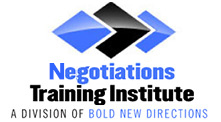Negotiation is an important skill for any business professional and the ability to handle it effectively can be the key to success. Savvy negotiators have learned how to read body language in an effort to gain the upper hand in negotiations. These negotiators understand that there are valuable opportunities in simply paying attention to their counterparts’ nonverbal messages. Body language can significantly influence the outcome of a negotiation so it is important to take notice.
Body language takes many forms such as hand gestures, facial expressions, and posture. If understood and used correctly, body language can be leveraged to achieve better results. Here we will take a closer look at how body language affects negotiations and what to look for when reading your counterpart’s body language.
Why is it important to read body language in a negotiation?
The ability to read others’ body language during a negotiation is a valuable skill that can put you at an advantage. You can gain valuable insight into what the other person is thinking and feeling just by observing their body language. For example, if the other party crosses their arms, it suggests that they are feeling defensive and hesitant about the discussion. On the other hand, if they lean forward with open arms, it demonstrates that they are interested and engaged in the conversation. Identifying these signs can help you adjust your negotiation strategy accordingly.
Tips for reading body language:
In order to effectively read body language during a negotiation, you need to focus on three main body language signals: hand gestures, facial expressions, and posture.
Hand Gestures
Hand gestures can say a lot about how someone is feeling. There are many different signs to watch for such as nervous fidgeting, tapping, or clenching- all of which display signs of discomfort. On the other hand, open palms suggest sincerity, honesty, and trust.
Facial Expressions
We have all heard someone say, “you could see it written all over your face.” This refers to nonverbal communication through facial expressions. A genuine smile shows that the other party is satisfied or happy while a forced smile indicates tension. Similarly, raised eyebrows indicate surprise or confusion while furrowed eyebrows means concern.
Posture
Finally, pay close attention the way the other person is sitting. If they are sitting upright with their shoulders back this is a display of confidence, while slouching or leaning displays weakness or lack of interest.
Benefits of body language in negotiations:
Learning to read body language can help you identify what the other person is thinking and feeling without overtly asking them. You can use this information to establish better communication with your counterpart, build rapport and trust, and alter your strategy in order to reach a better outcome. Just as important as it is to read others’ body language, you always want to be mindful of your own. Sending positive signals through our own body language will also help signify trust, honesty, and confidence.
